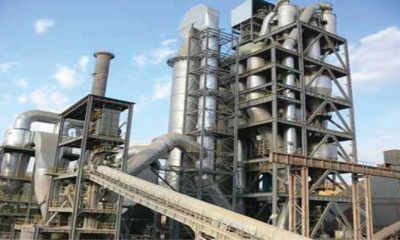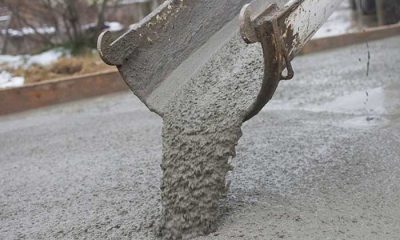Concrete
Boosting Productivity
Published
2 weeks agoon
By
admin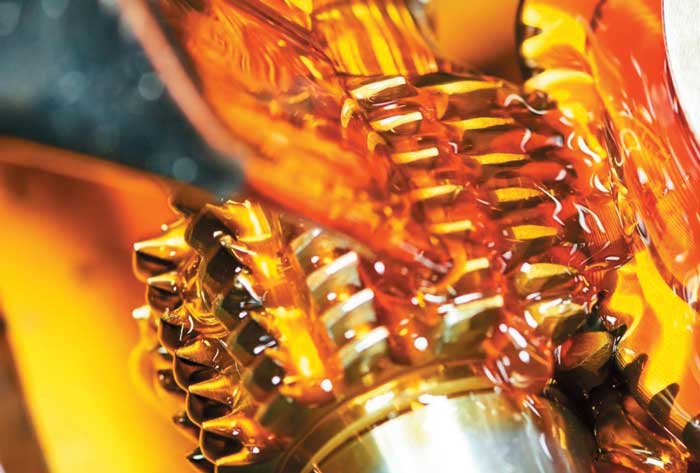
ICR delves into how advanced industrial lubricants are changing the game for the cement sector by enhancing the performance and longevity of heavy machinery and improving the productivity of cement plants.
Lubricants play a pivotal role in the cement industry, ensuring the smooth and efficient operation of machinery involved in the production process. Cement manufacturing is a rigorous process that involves heavy machinery operating under extreme conditions such as high temperatures, heavy loads, and dusty environments. Effective lubrication is critical to maintain the functionality and longevity of this equipment.
Fortune Business Insights states that the global industrial lubricants market was valued at US$ 71.55 billion in 2023 and is projected to be worth US$ 74.05 billion in 2024 and reach US$ 96.93 billion by 2032, exhibiting a CAGR of 3.3 per cent during the forecast period. Lubricants that are used for industrial applications are considered industrial lubricants.
According to Custom Marketing Insights, India Industrial Lubricants Market is valued at US$ 13,045 million in 2024 and is expected to reach US$ 20,715 million by 2033, at a CAGR of 4.12 per cent during the forecast period 2024- 2033.
One of the primary functions of lubricants in the cement industry is to reduce friction between moving parts. This reduction in friction minimises wear and tear, thus extending the lifespan of machinery and reducing the frequency and cost of repairs. Lubricants also help in dissipating heat generated by friction, which is crucial for preventing overheating and potential damage to equipment.
In addition to reducing friction and heat, lubricants provide a protective barrier against contaminants such as dust and moisture. This protection is essential in the cement industry, where the dusty environment can lead to abrasive wear and corrosion if machinery is not adequately lubricated.
Proper lubrication also enhances the efficiency of machinery. Well-lubricated equipment operates more smoothly, leading to improved performance and reduced energy consumption. This efficiency not only lowers operational costs but also contributes to the overall productivity of the cement plant.
“We evaluate the cost-effectiveness of different lubricants through a comprehensive analysis. Factors considered include performance metrics, longevity, environmental impact, and overall operational efficiency. Our purchasing decisions prioritise value without compromising on quality or sustainability. Our goal is to strike a balance between cost-effectiveness and performance excellence,” says Amit Mehta, Vice President – Operations, Wonder Cement.
Moreover, advancements in lubricant technology have led to the development of specialised lubricants designed to meet the specific needs of the cement industry. These include high-temperature lubricants, synthetic oils, and environmentally friendly options that offer superior performance and sustainability benefits.
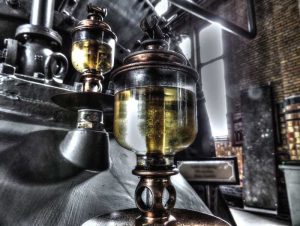
Types of lubricants
Gear oils: They are essential in the cement industry for lubricating the gears found in heavy machinery such as crushers, mills, and kilns. These oils are formulated to withstand high pressures and loads, ensuring smooth and efficient gear operation. They often contain additives to enhance performance under extreme conditions, reducing friction and wear, and providing a protective film that extends the life of gear components.
Hydraulic oils: These are used in the hydraulic systems of cement plants, which power equipment such as conveyors, crushers, and kiln drives. These oils are designed to provide efficient power transfer, corrosion protection, and optimal viscosity under varying temperatures. High-quality hydraulic oils help in minimising wear and tear on system components, reducing the risk of system failures and downtime.
Grease: It is widely used for lubrication in the cement industry due to its ability to stay in place and provide long-lasting protection. It is particularly useful in applications where liquid lubricants might not be retained, such as bearings, seals and gears. Grease is formulated to withstand extreme temperatures, heavy loads and environmental contaminants, making it ideal for the harsh conditions in cement manufacturing.
Specialty lubricants: They include a range of products designed for specific high-performance applications within the cement industry. These can include high-temperature lubricants for kiln operations, synthetic lubricants that offer superior stability and protection, and bio-based lubricants that provide environmentally friendly alternatives. Specialty lubricants are tailored to meet the unique challenges of different processes, ensuring optimal machinery performance and longevity.
Synthetic lubricants: They are engineered to provide enhanced performance over traditional mineral oils. They offer superior thermal stability, oxidation resistance, and protection against wear, making them suitable for the demanding environments of cement manufacturing. Synthetic lubricants are often used in critical applications where equipment reliability and efficiency are paramount, such as in gearboxes, compressors and high-temperature areas.
Each type of lubricant plays a crucial role in ensuring the seamless operation and maintenance of machinery within the cement industry. By selecting the appropriate lubricant for each application, cement plants can achieve greater efficiency, reduced downtime, and extended equipment life.
Lubrication technology and management system
Lubrication technology has advanced significantly, providing the cement industry with sophisticated solutions to enhance equipment performance and longevity. Modern lubricants are formulated with high-quality base oils and advanced additives that improve their ability to reduce friction, dissipate heat, and protect against wear and corrosion. Innovations such as synthetic lubricants offer superior stability and performance under extreme conditions, while bio-based lubricants present environmentally friendly alternatives. Additionally, high-performance additives enhance lubricant capabilities, ensuring optimal operation of machinery under heavy loads and high temperatures typical in cement manufacturing.
A lubrication management system is crucial for ensuring the efficient use of lubricants and the optimal performance of machinery. This system involves regular monitoring and analysis of lubricant conditions, scheduled maintenance, and the strategic application of lubricants to critical components. By implementing a robust lubrication management system, cement plants can predict and prevent equipment failures, reduce downtime, and extend the lifespan of machinery. Advanced systems may include automated lubrication systems that deliver precise amounts of lubricant at controlled intervals, minimising human error and ensuring consistent lubrication.
KB Mathur, Founder and Director, Global Technical Services, says, “A basic requirement is to maintain quality of lubricants and greases manufactured by standard and reputed oil companies. The specification of the oil is therefore to be maintained and oil to be kept in clean condition to avoid any contamination with dust, dirt or moisture. This contamination has to be kept under control for good mechanical maintenance. Any breakdown in cement plant operation is very costly, affecting production.”
“Therefore, it is essential for cement plants to invest in good lubrication practices by having dedicated manpower, doing lubrication, keeping oil clean by use of filtration machines, oil testing laboratory at site, to ensure quality of oil as per specifications and take corrective action, when required,” he adds.
Effective maintenance practices are integral to successful lubrication management in the cement industry. These practices include routine inspections, timely lubrication, and the use of proper techniques and tools. Maintenance staff should be trained to recognise signs of lubricant degradation and machinery wear, and to understand the specific lubrication requirements of different equipment. Predictive maintenance, facilitated by condition monitoring technologies, allows for the early detection of potential issues, enabling preemptive actions to avoid unplanned outages. Regular oil analysis and lubrication audits help in assessing the effectiveness of the lubrication programme and making necessary adjustments to improve performance and reliability.
Together, advanced lubrication technology, a comprehensive lubrication management system, and diligent maintenance practices form the backbone of efficient and reliable operations in the cement industry, leading to enhanced productivity and reduced operational costs.
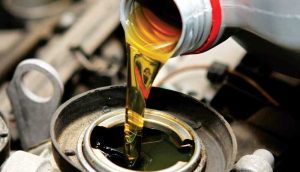
High performance additives
High-performance additives are essential components in modern lubricants, enhancing their functionality and effectiveness in demanding applications such as those found in the cement industry. These additives are chemical compounds formulated to improve various properties of the base oil, allowing the lubricants to meet specific performance requirements and extend the operational lifespan of machinery.
Lisa Marston, Regional Technical Service Engineer, Cortec Corporation, says, “Cortec has products that serve various needs in lubricating systems. One major category of products is oil additives with contact and vapour phase corrosion inhibitors that are designed to provide enhanced corrosion protection in addition to the lubricating oil itself during long term storage and intermittent operating conditions for gearboxes, steam turbines, pumps, etc. Cortec also offers greases that are formulated with vapour phase corrosion inhibitors, some of which are derived from renewable resources. Additionally, Cortec manufactures general purpose lubricants with corrosion inhibitors that can be used on valve bushings, fasteners, and packing glands, as a few examples. The addition of contact and vapour phase corrosion inhibitors in these products ensures consistent corrosion protection throughout the equipment, even when components may not be in direct contact with the lubricant.”

- Anti-wear additives: These additives form a protective film on metal surfaces, reducing friction and preventing wear and tear under high-pressure conditions. This is crucial in extending the life of gears and bearings in cement machinery.
- Extreme pressure (EP) additives: EP additives are designed to provide additional protection under extreme load conditions. They react with metal surfaces to create a protective layer that prevents welding and scoring of metal parts, ensuring smooth operation in heavy-duty equipment.
- Anti-oxidants: These additives prevent the oxidation of the lubricant, which can lead to the formation of sludge and varnish. By inhibiting oxidation, antioxidants help maintain the lubricant’s viscosity and performance over extended periods, even in high-temperature environments.
- Corrosion inhibitors: Corrosion inhibitors protect metal surfaces from rust and corrosion caused by exposure to moisture and other corrosive agents. This is particularly important in the cement industry, where machinery is often exposed to harsh environmental conditions.
- Detergents and dispersants: These additives keep engines and machinery clean by preventing the formation of deposits and sludge. Detergents neutralise acids formed during the combustion process, while dispersants keep particles suspended in the lubricant, preventing them from clumping together and causing blockages.
- Viscosity index improvers: These additives help the lubricant maintain its viscosity across a wide temperature range. This ensures that the lubricant performs effectively in both high and low temperatures, providing consistent protection and performance.
By incorporating these high-performance additives, lubricants can deliver enhanced protection, efficiency and durability. In the cement industry, where equipment operates under extreme conditions, the use of such advanced lubricants is critical for maintaining operational efficiency, reducing downtime and prolonging the lifespan of expensive machinery.
Sustainability and lubrication
Sustainability has become a critical focus in the cement industry, including the realm of lubrication. Sustainable lubrication practices involve using high-performance, environmentally friendly lubricants, optimising lubricant usage, and ensuring proper disposal and recycling of used lubricants. These practices help minimise environmental impact, improve energy efficiency and reduce waste, aligning with global sustainability goals.
Proper disposal and recycling of used lubricants are essential for minimising environmental pollution and conserving resources. The cement industry, with its substantial lubricant usage, must implement robust procedures for handling used lubricants.
Used lubricants can contain harmful contaminants that pose environmental risks if not disposed of correctly. Cement plants should follow stringent regulations and guidelines for the safe disposal of used lubricants. This typically involves collecting the used lubricants in designated containers and ensuring they are handled by licensed waste management companies that specialise in hazardous waste disposal. These companies treat the used lubricants to neutralise harmful substances before safe disposal, preventing soil and water contamination.
Recycling used lubricants is an effective way to reduce environmental impact and promote sustainability. The recycling process involves collecting used lubricants and subjecting them to re-refining, which removes impurities and restores the lubricants to a usable state. Re-refined lubricants can perform comparably to new lubricants, making them a viable option for reuse in various applications.
The cement industry can contribute to lubricant recycling efforts by partnering with certified recycling facilities. These facilities use advanced technologies to clean and purify used lubricants, converting them into high-quality products that can re-enter the market. This not only reduces the demand for virgin lubricant production but also minimises waste and conserves natural resources.
Incorporating sustainable lubrication practices, including the proper disposal and recycling of used lubricants, helps the cement industry reduce its environmental footprint, enhance operational efficiency, and align with broader sustainability initiatives. By doing so, the industry can contribute to a healthier environment and more sustainable future.
Conclusion
Effective lubrication is essential for the cement industry, ensuring the efficient and reliable operation of machinery under demanding conditions. The use of advanced lubrication technology, including high-performance synthetic and bio-based lubricants, significantly enhances equipment performance and longevity. Implementing a comprehensive lubrication management system, coupled with effective maintenance practices, allows cement plants to minimise downtime, reduce operational costs and extend the lifespan of their machinery.
Sustainability is also a key consideration in lubrication practices. The proper disposal and recycling of used lubricants are crucial for minimising environmental impact and conserving resources.
By following stringent regulations and partnering with certified recycling facilities, the cement industry can effectively manage waste and promote a circular economy. These efforts contribute to a reduced environmental footprint, aligning with global sustainability goals and fostering a healthier environment.
In conclusion, embracing advanced lubrication technology, robust management systems, and sustainable practices not only improves the operational efficiency of cement plants but also supports their commitment to environmental responsibility. By prioritising these aspects, the cement industry can achieve greater productivity and sustainability, paving the way for a more efficient and eco-friendly future.
– Kanika Mathur
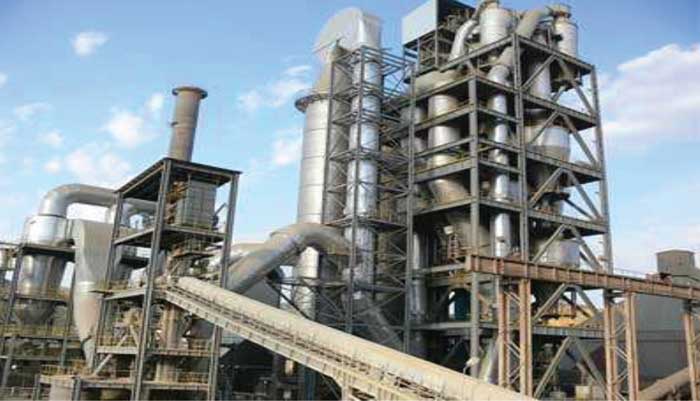
Dr SB Hegde, Professor, Jain College of Engineering and Technology, Hubli and Visiting Professor, Pennsylvania State University, United States of America, helps us understand the process of maximising efficiency and sustainability better through the use of advanced gas balancing in cement manufacturing. This is part two of a three-part series.
In the first part of the article, we studied the improved efficiency and innovation in gas balancing brought about by Internet of Things (IoT), the fundamentals of gas balancing techniques and the kiln exit gas analysis. Let us look at the role of technology in the process of advanced gas balancing.
4. Emissions abatement technologies
Emissions abatement technologies are essential for reducing the environmental impact of cement production by capturing and treating pollutants emitted from the kiln and other process sources. These technologies include selective catalytic reduction (SCR), electrostatic precipitators (ESP), baghouse filters and wet scrubbers.
4.1. Key parameters monitored and controlled
– Nitrogen Oxides (NOx): Controlled using SCR systems, which catalytically convert NOx to nitrogen and water.
– Particulate Matter (PM): Controlled using ESPs, baghouse filters, or wet scrubbers, which remove particulate matter from the kiln exhaust.
– Sulphur Dioxide (SO2): Controlled using wet scrubbers or sulphur dioxide scrubbing systems, which remove sulfur dioxide from the kiln exhaust.
4.2. Latest Technicalities
– Advanced Catalyst Materials: Utilise novel catalyst formulations to enhance the efficiency and durability of SCR systems.
– High-Efficiency Filtration Media: Employ advanced filter materials with high filtration efficiency and low pressure drop to optimize particulate
matter removal.
5. Process Integration
Process integration involves the seamless coordination and optimisation of gas balancing techniques with other aspects of cement production, such as raw material preparation, clinker cooling and cement grinding.
By integrating gas balancing with overall process control strategies, cement plants can achieve holistic optimisation and maximise efficiency.
5.1. Key Parameters Monitored and Controlled
– Raw Material Composition: Controlled to optimise kiln feed chemistry and minimise energy consumption during clinker formation.
– Clinker Cooling Rate: Controlled to optimise clinker quality and minimise energy consumption during the cooling process.
– Cement Grinding Parameters: Controlled to optimise cement quality and minimise energy consumption during the grinding process.
5.2. Latest Technicalities
– Integrated Process Control Systems: Utilise advanced control algorithms and data analytics to optimise gas balancing alongside other process parameters in real-time.
– Digital Twin Simulations: Employ digital twin models of the cement production process to simulate and optimise gas balancing strategies before implementation.
Gas balancing in cement manufacturing relies on a combination of advanced techniques and technologies to optimise combustion efficiency, minimise emissions and maximise overall process performance.
By monitoring and controlling key parameters in combustion control systems, kiln exit gas analysis, emissions abatement technologies, and process integration, cement plants can achieve significant improvements in efficiency and sustainability, contributing to a more environmentally responsible cement industry.
6. Kiln exit gas analysis and its applications
Kiln exit gas analysis is a critical aspect of cement manufacturing, offering invaluable insights into combustion efficiency, clinker quality and overall kiln performance. By monitoring key parameters in the gases exiting the cement kiln, operators can optimise process conditions, improve energy efficiency and ensure product quality.
Let’s deep dive into the significance of kiln exit gas analysis, the parameters measured, and their implications for process optimisation, along with relevant case studies demonstrating its practical applications.
6.1. Significance of kiln exit gas analysis
o Monitoring combustion efficiency
Kiln exit gas analysis provides real-time feedback on the combustion process within the cement kiln. By measuring the concentration of combustion by-products such as oxygen (O2) and carbon monoxide (CO), operators can assess the efficiency of fuel combustion. Deviations from optimal combustion conditions can indicate issues such as incomplete combustion, improper air-to-fuel ratios, or burner malfunctions, which can lead to energy waste and reduced kiln efficiency.
o Assessing clinker quality
The composition of kiln exit gases can also provide insights into the quality of the clinker being produced. Factors such as the presence of volatile organic compounds (VOCs) or excessive dust levels in the kiln exit gases may indicate problems with raw material composition, kiln operation, or cooling processes, which can affect the final product quality. Analysing kiln exit gases allows operators to identify and address issues that could compromise clinker quality and downstream cement properties.
6.2. Parameters Measured in Kiln Exit Gas Analysis
• Oxygen (O2) Content
Oxygen content in kiln exit gases is a crucial parameter for assessing combustion efficiency. High levels of oxygen may indicate incomplete combustion, while low levels may suggest fuel-rich conditions. Maintaining optimal oxygen levels ensures efficient fuel utilisation and minimises energy consumption.
• Carbon Monoxide (CO) Content
Carbon monoxide is a by-product of incomplete combustion and can be an indicator of inefficient kiln operation or burner performance. Elevated CO levels in kiln exit gases signal the need for adjustments to improve combustion efficiency and reduce emissions.
• Volatile Organic Compounds (VOCs)
VOCs in kiln exit gases can originate from various sources, including raw materials, fuels, and additives. High levels of VOCs may indicate incomplete combustion, poor kiln feed quality, or leaks in the kiln system. Monitoring VOC emissions is essential for environmental compliance and maintaining air quality standards.
*References were shared in the first part.
About the author
Dr SB Hegde, a Professor at Jain College of Engineering and Technology (Jain University) and Visiting Professor at Pennsylvania State University, United States of America, brings over thirty years of leadership experience in the Cement Industry in India and Internationally. He has published over 198 research papers and holds six patents, with four more filed in the USA in 2023. Dr Hegde’s advisory roles extend to multinational cement companies globally and a governmental Think Tank, contributing to research and policy. Recognised for his contributions, he received the ‘Global Visionary Award’ in 2020 from the Gujarat Chambers of Commerce and Industry.

Appropriate sourcing of alternative fuels and raw materials (AFR) has long since been a bone of contention in the cement industry. As net-zero emission becomes a concrete target, every stakeholder in the cement supply chain is exploring green substitutes. Indian Cement Review discovers how collaborative efforts with other industries and innovators is proving to be a boon for the Indian cement sector.
Cement manufacturing is a major contributor to global environmental challenges, primarily due to its significant carbon dioxide (CO2) emissions. The production process is inherently carbon-intensive, involving several stages that each contribute to the overall environmental impact. The primary chemical reaction in cement production is the calcination of limestone (calcium carbonate), which produces lime (calcium oxide) and CO2.
This process alone is responsible for approximately 60 per cent of the total CO2 emissions from cement production. Additionally, high temperatures (around 1450°C) are required in the kilns to facilitate the chemical reactions necessary for clinker formation. This heat is traditionally generated by burning fossil fuels such as coal, petroleum coke, and natural gas, contributing around 30-40 per cent of the CO2 emissions.
At present, the installed capacity of cement in India is 500 MTPA with production of 298 million tonnes per annum. Majority of the cement plants installed capacity (about 35 per cent) is located in the states of south India. In PAT scheme, total installed capacity of cement in India is 325 MTPA, which contributes to 65 per cent coverage of total installed capacity in India. With the increase in growth of infrastructure, the cement production in India is expected to be 800 million tonnes by 2030, according to the Bureau of Energy Efficiency, India.
Moreover, cement manufacturing is energy-intensive, and significant amounts of electricity are consumed during the grinding of raw materials and clinker, as well as in other processes. If the electricity comes from fossil fuel-based sources, it adds to the CO2 footprint. Emissions are also generated from the transportation of raw materials to the plant and the distribution of finished cement products, further contributing to the industry’s overall carbon footprint.
In addition to CO2 emissions, cement plants emit dust and particulate matter, which can cause respiratory problems and other health issues for nearby communities. The combustion process releases nitrogen oxides (NOx) and sulphur oxides (SOx), which contribute to air pollution and acid rain. Large quantities of natural resources, including limestone, clay, and other materials, are extracted, leading to landscape alteration and ecosystem disruption.
According to the World Economic Forum report ‘Net-Zero Industry Tracker 2023’, absolute CO2 emissions declined by less than 1 per cent over the last four years amid increases in global production. Emissions intensity remained static over the same time period despite a 9 per cent rise in the clinker-to-cement ratio. The average ratio is currently
72 per cent, while the proposed GCCA target is 56 per cent. The twin forces of urbanisation and population growth are driving cement consumption in China (51 per cent global demand) and India (9 per cent global demand), which necessitates accelerated action to decarbonise the sector to mitigate the impacts of increased production.
To address these environmental challenges, the cement industry is exploring several mitigation strategies. Utilising biomass, waste-derived fuels, and other renewable energy sources can reduce reliance on fossil fuels and lower CO2 emissions. Incorporating industrial by-products like fly ash and slag can reduce the amount of clinker needed, thereby cutting emissions. Advances in kiln efficiency, carbon capture and storage (CCS), and the development of low-carbon cements are crucial in reducing the industry’s carbon footprint. Implementing energy-efficient practices and technologies throughout the production process can significantly lower overall emissions.
The Ministry of Statistics and Programme Implementation states that there is a high potential for generation of renewable energy from various sources like wind, solar, biomass, small hydro and cogeneration bagasse in India. The total potential for renewable power generation in the country as on 31.03.2023 is estimated at 2,109,654 MW This includes solar power potential of 7,48,990 MW (35.50 per cent), wind power potential of 1,163,856 MW (55.17 per cent) at 150m hub height, large hydro power of 133,410MW (6.32 per cent), SHP (small-hydro power) potential of 21,134 MW (1 per cent), Biomass power of 28,447 MW (1.35 per cent) and 13,818 MW (0.66 per cent) from bagasse-based cogeneration in sugar mills.
AFR – Need of the hour
The urgency of reducing the carbon footprint in cement manufacturing has become a pressing issue due to the industry’s significant contribution to global CO2 emissions. As the world strives to meet climate goals and mitigate the impacts of climate change, there is an increasing demand for more sustainable practices within all sectors, including cement production.
According to an article in the International Journal of Sustainable Engineering, Volume 14, 2021, In 2017, China and India, the world’s biggest producers, together produced 64 per cent of the world’s cement, or 2.61 million tonnes of cement out of 4.05 million tonnes. In 2018, these countries together estimated production of 2.66 million tonnes of the total 4.10 million tonnes, or 65 per cent of the world’s total. In the Middle East, Saudi Arabia, the region’s major cement producer, manufactured 0.47 and 0.45 million tons for 2017 and 2018, respectively. In comparison, in the same years, the United States produced 0.86 and 0.88 million tonnes of cement.
Economic and regulatory pressures further drive the need for alternative fuels and raw materials. Governments and international bodies are implementing stricter environmental regulations and carbon pricing mechanisms to curb greenhouse gas emissions. These policies create financial incentives for companies to reduce their carbon footprint and penalise those that fail to comply. Additionally, consumers and investors are becoming more environmentally conscious, favouring companies that adopt sustainable practices.
Adopting alternative fuels and raw materials offers numerous benefits for the cement industry. Utilising waste-derived fuels and industrial by-products can lower production costs by reducing reliance on expensive fossil fuels and virgin raw materials. This shift not only helps in minimising environmental impact but also supports the circular economy by recycling waste materials. Furthermore, improving energy efficiency and incorporating innovative technologies can enhance the overall competitiveness of cement manufacturers by reducing operational costs and future-proofing against potential regulatory changes.
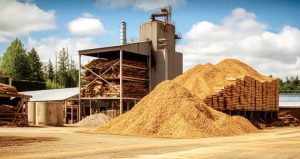
Anirudh Dani, Manufacturing Head – White Cement Division, JK Cement, states,“Safety and quality are key for co-processing of AFR. We have implemented various key safety initiatives specifically for the handling, storage, feeding, and operational processes related to AFR. We ensure the quality and safety of alternative fuels and raw materials by conducting thorough assessments, adhering to strict handling protocols, providing comprehensive
staff training, and implementing regular monitoring and testing throughout the production process.
We have created dedicated storage with all safety measures to store the AFRs with relevant environmental compliances.”
He adds, “For all AFR, we conduct a comprehensive analysis that includes calorific value, chloride content, proximate and ultimate analysis, major and minor oxides, and heavy metals. To ensure safety, we also perform compatibility tests and flash point analysis. Additionally, for all liquid AFRs, we measure pH and viscosity.”
Technological innovations
Tushar Khandhadia, Senior General Manager – Production, Udaipur Cement Works Limited (UCWL), says, “In general, 65 per cent of CO2 generated during clinker formation is through process emission, which comes from the calcination of limestone and 35 per cent is through burning of fuel. The AFR contributes to reducing the CO2 emitted from fuel combustion. Generally, at every 1 per cent increase in TSR, there is reduction of around 2kg CO2/T of clinker. As there is no substitute to the limestone for the clinker formation, increasing the TSR in clinker formation is the only option to reduce CO2 emission during clinker formation.”

Technological innovations and advanced processes play a crucial role in reducing the environmental impact of cement manufacturing. One key area of progress is advances in kiln technology and fuel efficiency. Modern kilns are designed to operate at higher efficiencies, reducing the amount of fuel required to produce clinker. Innovations such as pre-calciner technology and improved heat recovery systems contribute significantly to lowering energy consumption and CO2 emissions. Additionally, alternative fuels, such as biomass and waste-derived fuels, can be utilised more effectively in these advanced kiln systems.
Carbon capture and storage (CCS) and utilisation (CCU) technologies represent another major technological advancement. CCS involves capturing CO2 emissions from cement plants and storing them underground to prevent their release into the atmosphere. CCU goes a step further by finding ways to use captured CO2 in industrial processes, turning it into useful products like synthetic fuels or construction materials. These technologies have
the potential to drastically reduce the carbon footprint of cement manufacturing, making it a more sustainable industry.
Jigyasa Kishore, Vice President – Enterprise Sales and Solutions, Moglix, says, “Green procurement directly tackles environmental challenges by minimising resource depletion, lowering carbon emissions and protecting ecosystems. Choosing energy-efficient equipment, recycled materials and local suppliers all contribute to a smaller ecological footprint for the business.”
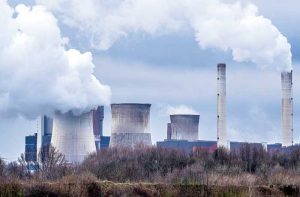
“Green procurement goes beyond the initial purchase. It considers the environmental impact of a product or service throughout its entire life cycle, from raw material extraction and production to use and disposal. Choosing products with recycled content, low energy consumption and easy end-of-life disassembly or recycling options is imperative to make sure that sustainability is built into the entire product journey rather than just the initial stage. Evaluation tools such as Life cycle sustainability assessment (LCSA) can help assess a product’s environmental, social and economic impacts through out its life cycle, from raw materials to disposal,” she adds.
The development of low-clinker and low-carbon cements is also a significant area of innovation. Traditional Portland cement relies heavily on clinker, whose production is highly carbon-intensive. By reducing the clinker content and incorporating alternative materials such as fly ash, slag and pozzolans, manufacturers can produce cements with a much lower environmental impact. Additionally, new formulations of low-carbon cements are being developed that minimise CO2 emissions during production and enhance the durability and performance of concrete.
Implications of AFR
The use of alternative fuels and raw materials in cement manufacturing has significant implications for productivity, cost efficiency, and financial viability. These alternatives can enhance the overall sustainability and economic performance of cement plants.
Radhika Choudary, Co-Founder, Freyr Energy, says, “The average operational expenses towards electricity and fuel for the cement industry ranges between 20 per cent to 30 per cent. By transitioning to solar energy, companies can notably slash these expenses, fostering improved cash flows while demonstrating environmental responsibility. Our customers, who have chosen to go solar, have not only enhanced financial viability but also earned accolades from customers for sustainable practices Commercial and industrial customers can have an ROI of 35 per cent to 40 per cent on their solar asset investment, which means a breakeven period of less than three years, which can be further expedited by leveraging tax benefits. Overall, our energy solutions not only reduce manufacturing costs but also bolster sustainability efforts, leading to enhanced profitability and market competitiveness for our clients.”
Cost efficiency
Alternative fuels and raw materials often come with cost advantages. Waste-derived fuels and industrial by-products are typically less expensive than traditional fossil fuels and virgin raw materials. By reducing reliance on costly conventional fuels, cement plants can achieve substantial savings in fuel expenses. Moreover, utilising local waste materials can lower transportation costs and reduce supply chain disruptions. Enhanced energy efficiency and optimised resource use further contribute to reducing operational costs, making the overall production process more cost-effective.
Economic viability
The financial viability of cement manufacturing is strengthened through the adoption of alternative fuels and raw materials. By diversifying energy and material sources, plants can mitigate the risks associated with price volatility in fossil fuels and raw materials markets. Additionally, many governments offer incentives, subsidies and tax benefits for adopting sustainable practices, which can improve the financial performance of cement plants. Investments in technologies that facilitate the use of alternative fuels and raw materials can yield long-term returns by enhancing competitiveness, reducing environmental compliance costs, and positioning the company as a leader in sustainability.
The use of alternative fuels and raw materials in cement manufacturing enhances productivity, cost efficiency and financial viability. By leveraging these alternatives, cement plants can achieve better operational performance, lower production costs and secure a sustainable economic future.
Conclusion
Incorporating alternative fuels and raw materials in cement manufacturing offers significant benefits in terms of productivity, cost efficiency, and financial viability. Advances in kiln technology and process optimisations enable the efficient use of alternative fuels without compromising product quality, enhancing overall productivity. These improvements not only enhance the economic performance of cement plants but also contribute to a more sustainable and environmentally responsible industry. As the cement industry continues to innovate and embrace these alternatives, it moves closer to achieving long-term sustainability and reduced carbon footprints, ensuring a resilient and economically viable future.
– Kanika Mathur
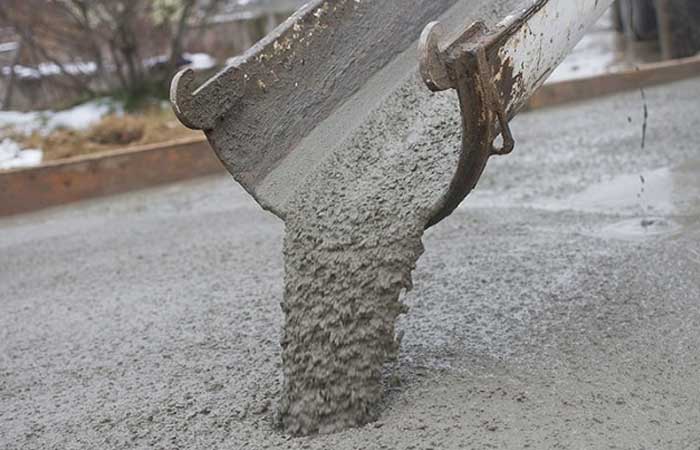
Benefits of using ternary blend-cement, flyash and GGBFS.
Cement is the prime ingredient in concrete. One tonne of cement produces around 0.8 to 1 MT of carbon dioxide. It’s worth noting that efforts are being made to reduce the carbon footprint of cement production by using supplementary cementitious materials such as flyash and GGBS in concrete. In case of ternary blended concrete, supplementary cementitious materials flyash, GGBS are used in addition to cement, sand, aggregate, water and admixture.
To evaluate the percentage of replacement of cement with flyash and GGBS, one needs to understand the properties of concrete mixed with flyash, GGBS as ingredient, structure strength, stripping time, durability requirements.
Flyash: Pulverised coal is used in thermal power plants for electricity generation. A by-product of this combustion reaction is flyash. The electrostatic precipitators (ESPs) used inside chimneys of the power plants remove flyash before ejecting out the combustion gases into the atmosphere. Flyash is a very fine particle like residue, which has pozzolanic properties. Hence, it is often blended with cement and also used as partial replacement of cement.
Flyash consists of silica (SiO2), alumina (Al2O3) and calcium oxide (CaO) as its major components.
- Due to the spherical shape of flyash, water demands in concrete are reduced and concrete becomes more cohesive.
- Silica in flyash reacts with calcium hydroxide released from cement to form CSH Gel.
- Formation of CSH Gel leads to increase in strength of concrete further and makes the concrete dense and durable.
- 35 per cent of cement can be replaced with flyash according to IS specification.
- Early strength is observed to be less for flyash concrete. Due to slow development of strength of concrete, stripping time gets delayed.
Ground granulated blast furnace slag (GGBFS): Blast furnace slag is a by-product of iron ore during the iron extraction process. Amongst all mineral admixtures, blast furnace slag has the highest specific gravity (2.8 to 3.0). The slag fineness is slightly more than that of the cement.
There are various types of slag available like air cooled slag, expanded or foamed slag, granulated slag. GGBFS possesses both cementitious and pozzolanic properties. An activator is needed to hydrate the slag.
- GGBFS increases the initial setting time of the concrete. But it does not alter the workability of the concrete much because its fineness is almost the same as that of the cement.
- The early rate of strength gain in concrete is diminished by replacement of cement in the concrete with GGBFS.
- The final strength is improved by slag cement and the durability of the concrete is increased.
- Concrete uses in marine construction are highly prone to chemical attack and corrosion. GGBFS as a concrete ingredient increases resistance against sulphate and chloride attack.
- Normally concrete tends to segregate with GGBS as an ingredient.
Ternary blend: Ternary blended concrete is observed to be more cohesive and workable due to presence of flyash in concrete. Early strength gain can be achieved by using both cement and GGBS in concrete. Concrete with ternary blend is a win-win situation in terms of good product quality, optimising the cost of concrete, durability and resistance against chemical attack. Additionally, the use of SCMs in concrete can contribute to sustainability efforts by minimising the cement content which is associated with significant carbon dioxide emission during its manufacturing process. The hydration process of ternary blended concrete is divided into primary reaction by OPC and GGBS, pozzolanic reaction of GGBS and flyash as the secondary process. Both materials react with Calcium hydroxide produced by cement hydration to form CSH gel which gives denser microstructure than conventional OPC concrete. The dense structure improves the durability properties of ternary blended concrete. Process yields to minimise penetration of aggressive chemicals such as sulphate, chloride as compared to conventional concrete mix.
– Nagesh Veeturi and Sumanta Sahu
(Communication by the management of the company)



















